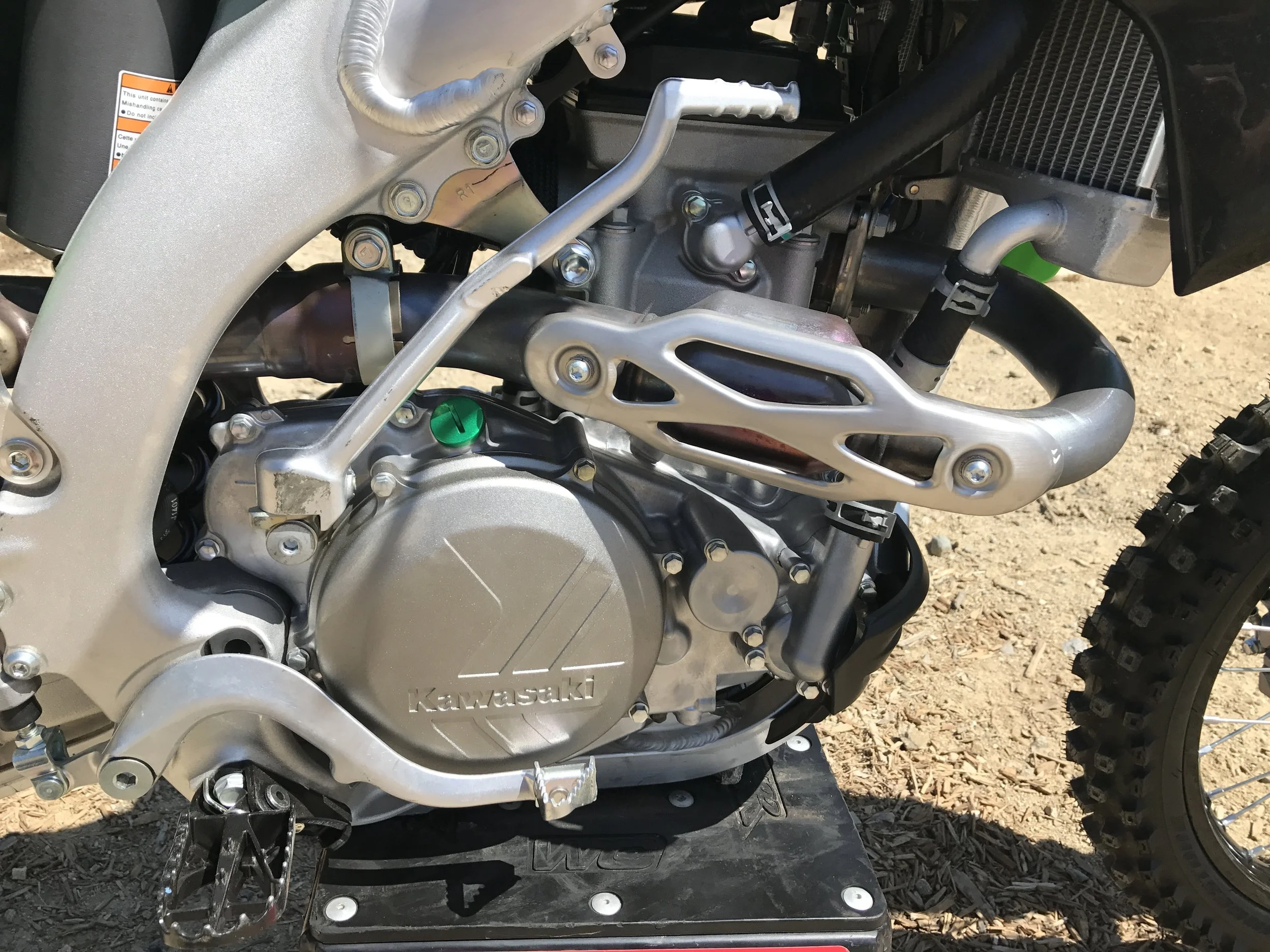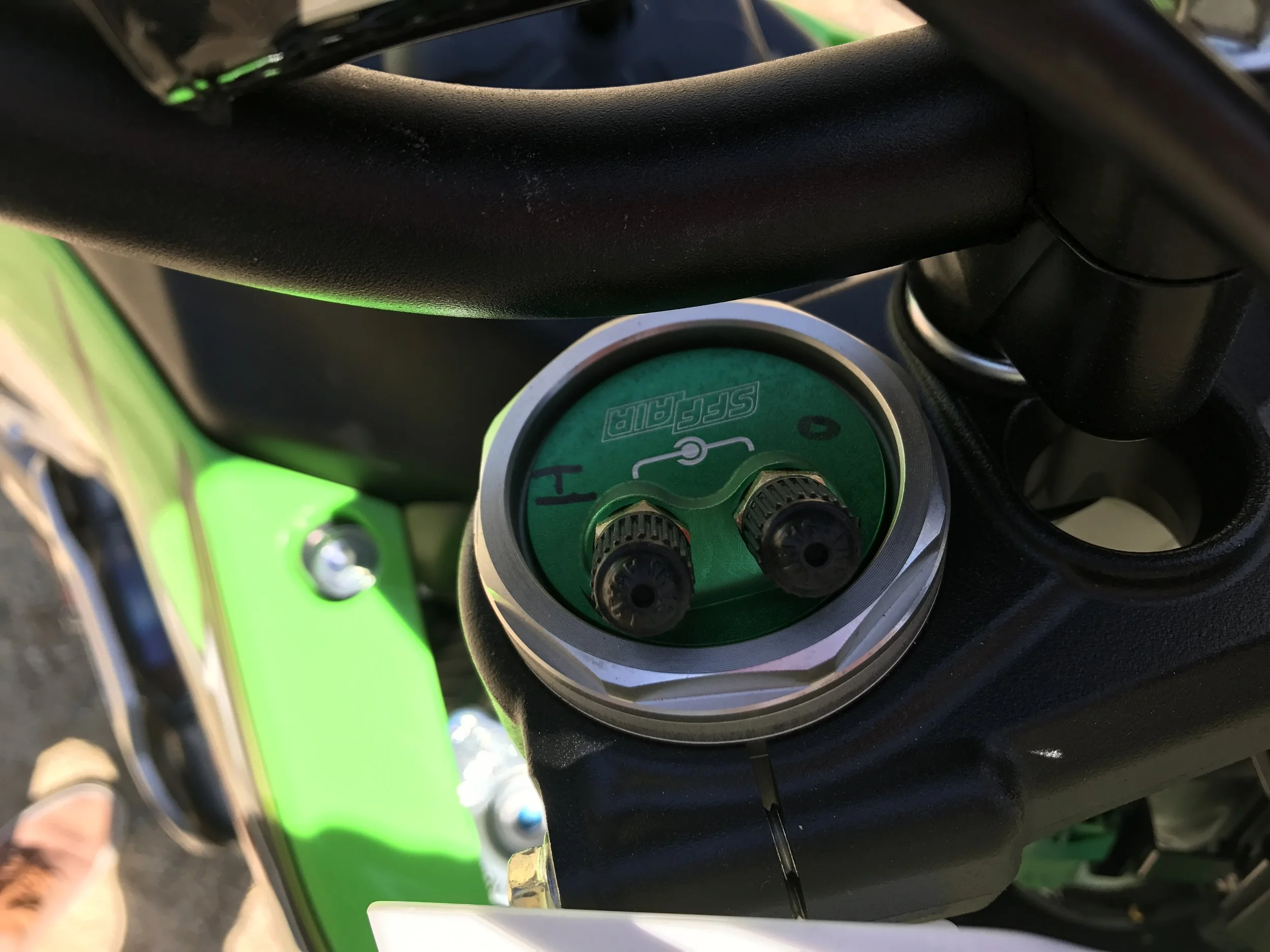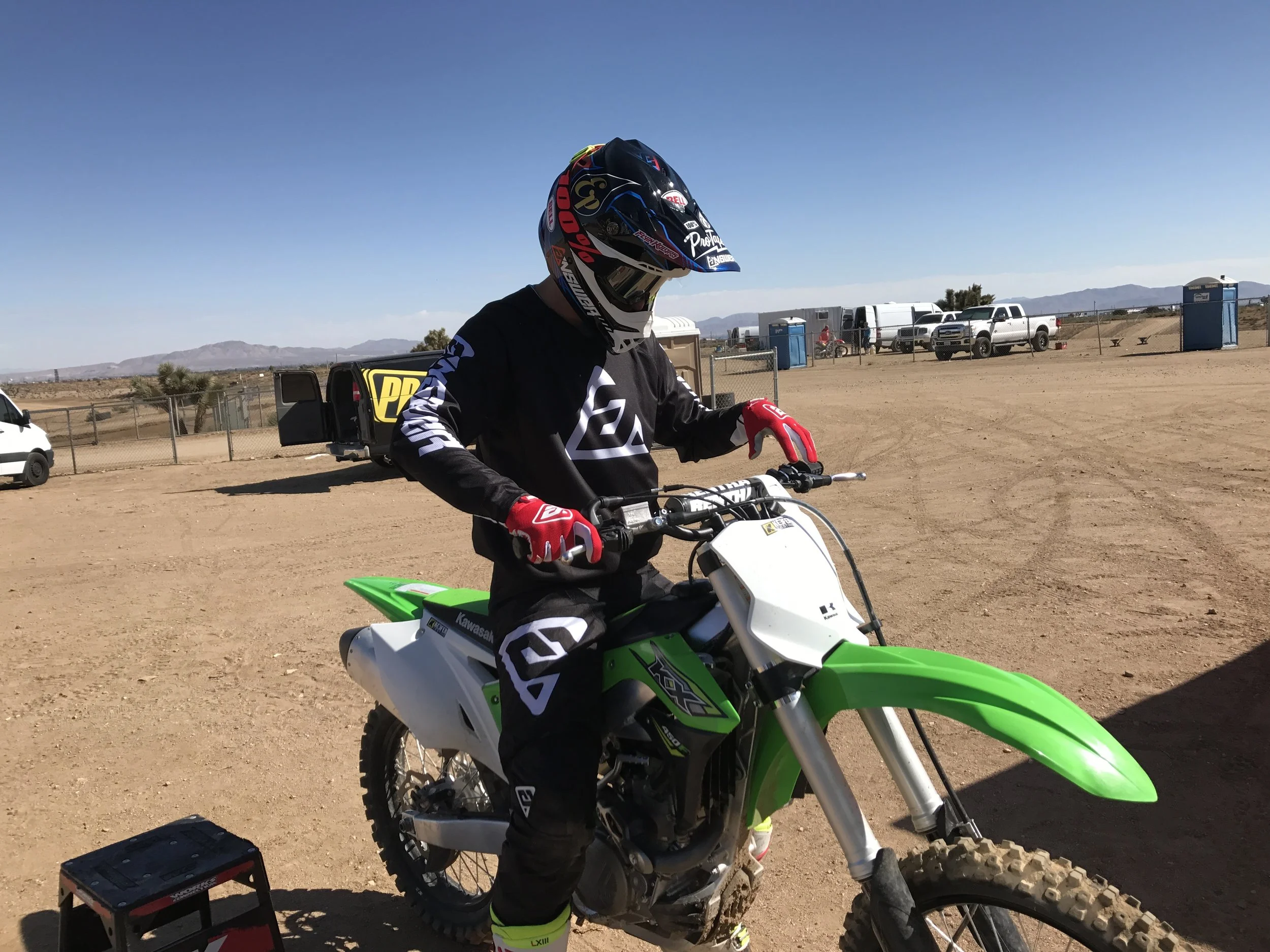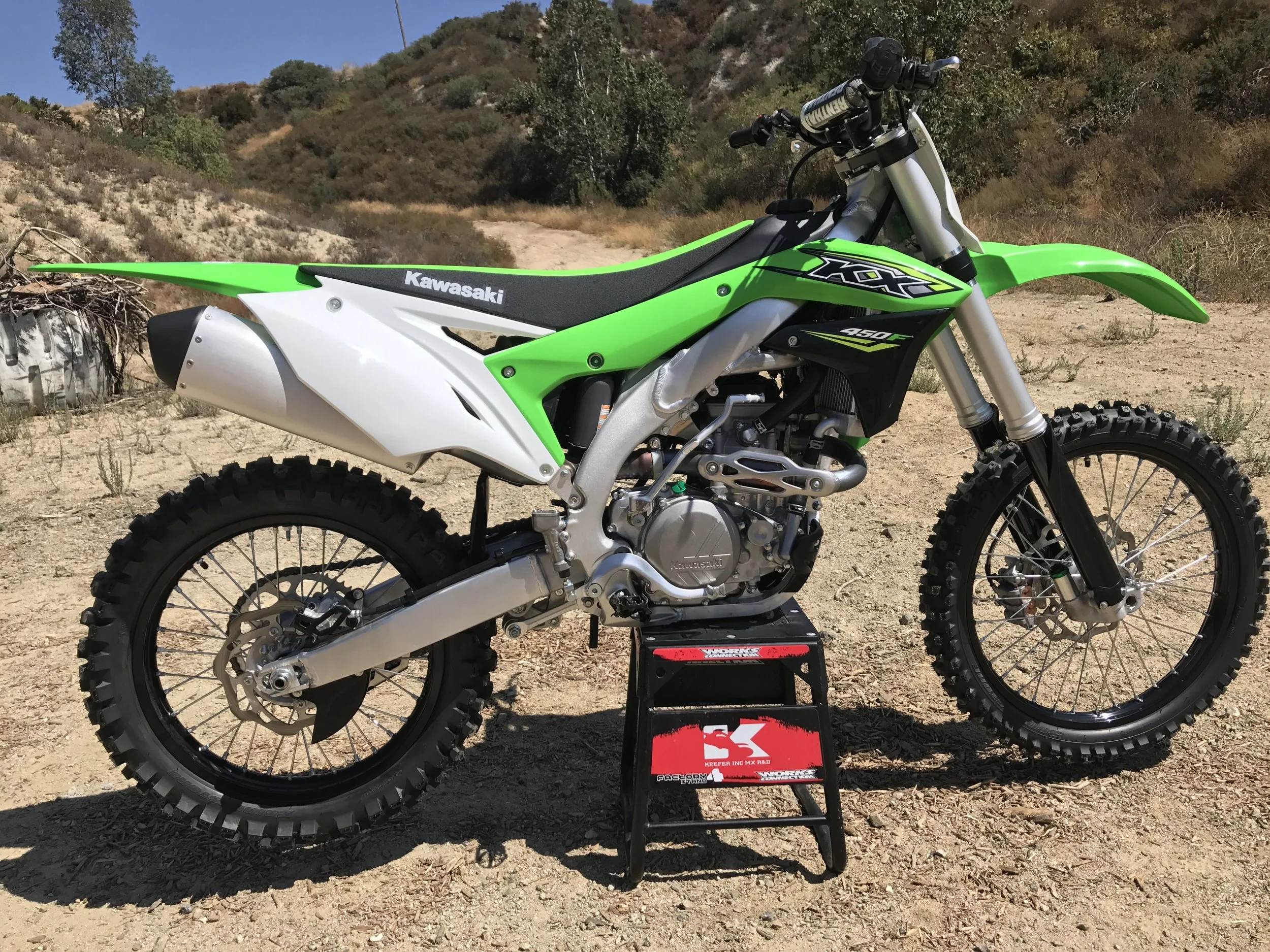Ergonomics are more friendlier to wider group of riders thanks to Kawasaki’s adjustable bar position and peg positions. You can choose from four handlebar positions and two peg heights (standard and -5mm). I am almost 6’0 and preferred the stock position on both the handlebar and footpegs.
Say what you want about 7/8 handlebars, but I still feel like there is a place for them on production bikes. Some magazines give negative remarks about manufacturers using 7/8 handlebars because they are cheap and flimsy. What they are missing is that using 7/8 handlebars can correlate to less rigidity on a machine. This is important, especially with today’s stiffer aluminum frames. I am sure the Kawasaki R&D department has tested oversize bars, but have decided to use 7/8 not only for cost, but for rigidity feeling on the motorcycle. So let’s not assume we know more than the Japanese engineers ok people!
The chain slider and chain guide are still not very good on the 2018 Kawasaki KX450F, so you might want to invest in several OEM pieces or you can go to TM Designworks and order their set up. However, be aware that the TM Designworks sliders and chain guides are louder and not as quiet as the stock pieces.








